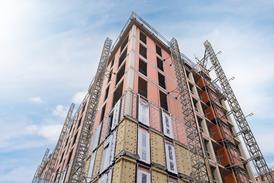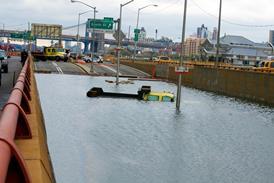- News

All the latest updates on building safety reformRegulations latest
- Focus
- Home
- News
- Focus
- Comment
- Events
- CPD
- Building the Future
- Jobs
- Data
- Subscribe
- Building Boardroom
Projects: The Londoner, Leicester Square
By Thomas Lane2020-01-24T06:00:00

Faced with severe space constraints on the site of the former Odeon cinema in Leicester Square, Edwardian Hotels has built more than half of The Londoner underground
The phrase “fitting a quart into a pint pot” perfectly summarised the dilemma facing hotel operator Edwardian Hotels when it decided to build its flagship hotel in one of London’s most famous destinations. Edwardian reckoned it needed 350 bedrooms to make the Londoner scheme viable. However, the south-west corner of Leicester Square is in the line of one of St Paul’s Cathedral’s viewing corridors, which keeps the sight of the cathedral clear from 13 points around London, including Greenwich Park to the south and Alexandra Palace in the north. This restricted the £300m project to eight storeys, meaning 350 bedrooms would fill the entire building – a challenge since planners stipulated the Odeon cinema formerly sat on site had to be integrated into the new scheme.
Read more…
Already registered? Login here
To continue enjoying Building.co.uk, sign up for free guest access
Existing subscriber? LOGIN
Stay at the forefront of thought leadership with news and analysis from award-winning journalists. Enjoy company features, CEO interviews, architectural reviews, technical project know-how and the latest innovations.
- Limited access to building.co.uk
- Breaking industry news as it happens
- Breaking, daily and weekly e-newsletters
Get your free guest access SIGN UP TODAY

Subscribe now for unlimited access
Subscribe to Building today and you will benefit from:
- Unlimited access to all stories including expert analysis and comment from industry leaders
- Our league tables, cost models and economics data
- Our online archive of over 10,000 articles
- Building magazine digital editions
- Building magazine print editions
- Printed/digital supplements
Subscribe now for unlimited access.
View our subscription options and join our community


















